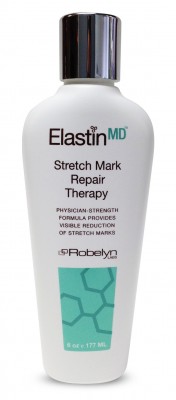Stretch mark treatments: topical creams versus laser resurfacing
The latest in stretch mark treatment is laser therapies that use pulse laser treatments to zap small portions of existing stretch marks. This causes very small wounds in the stretch mark and skin that then heals and purportedly reduces the appearance of the scarring from stretch marks. Several types of lasers are used by doctors and medical clinics. Laser treatments consist of multiple visits where portions of areas of stretch mark afflicted areas are treated.
The downsides of laser surfacing for stretch marks
During the treatments some may feel mild discomfort during the laser use - but laser treatments arent normally considered painful. Though swelling, tenderness, and redness can persist for a few days after each treatment. Treatments usually consist of a series of laser treatment appointments that may or may not be covered by medical insurance - since stretch marks arent typically considered a health concern laser resurfacing often falls under aesthetic treatments that arent covered. So multiple sessions can become expensive, depending on the area and severity of stretch marks.
Lasers may or may not work in the end.
Studies of laser treatments show inconsistent results depending on the severity and age of stretch marks being treated. Newer stretch marks that are still red in color appear to respond better than older marks that have turned white or silverish. Improvement in the appearance of stretch marks treated by laser resurfacing varies from 25% to 75% improvement overall. So after multiple, expensive treatments, theres no guarantee of success. And as with any medical treatment, risks exist. Under trained or inexperienced laser operators can cause burns or scarring as a result of laser treatments.
Topical treatments show good results for many
There are many types of stretch mark creams and lotions available. You can find stretch mark prevention creams, stretch mark removal lotions and serums, and everything in between. The benefit here is choice. Not everyones skin is the same so consumers can try different topical treatments until they find the solutions that works for them.
Modern ingredients show improved results
Topical treatments are constantly evolving and improving. Creams are no longer simply emollients and moisturizers or prescriptive ingredients such as Retin-A. Now topical treatments include advanced formulas and ingredient combinations that attack stretch marks on many levels within the skin. New peptides and cosmeceutical ingredients have been developed that show remarkable results in preventing and treating stretch marks - including new, reddish as well as older white stretch marks.
Generally, topical stretch mark treatments will cost less overall than medical laser resurfacing. And since laser results can vary similar to topical treatments saving money and avoiding doctor visits can be compelling for many. Moreover, theres reduced risk of complications and little concern over pain. Allergic reactions to ingredients are typically the worst problem with topical treatments and can be avoided by doing a small patch test on oneself before general use. Further, topical treatments can be used before, during, and after pregnancy to prevent as well as treat stretch marks.
Conclusion: Topical vs Laser treatments for stretch marks
Unfortunately, theres no definitive winner in the comparison of topical vs laser treatments for the removal of stretch marks. Both can work well or both can show less than optimum results. However, with topical treatments there is reduced risk, lower cost, and more variety of options - with new formulas appearing almost weekly. So if a winner has to be chosen the nod would probably go to topical treatments as a method of preventing stretch marks before they form and for showing results on a wider range of stretch marks (from new to aged marks).
May 16, 2012
By: laney














There are 0 comments for this entry. Leave a comment below »
Leave a comment. *Required